DLBCL associated with chronic inflammation is a special subtype of DLBCL first described in 1987 and subsequently recognized as a specific and separate entity in the 2008 WHO hematopathology classification.
Morphologically, it is recognized as a diffuse large B-cell lymphoma that arises in the setting of long-standing chronic inflammation and is associated with EBV infection. Commonly, these present as tumor masses involving body cavities. This is classically and originally described as pleural-based lesions in patients with chronic pyothorax (artificial pneumothorax for pulmonary tuberculosis or tuberculosis pleuritis).
Originally, these were designated as ‘pyothorax-associated lymphomas’ (PAL) and characteristically are associated with EBV. It is thought that these lesions arise as a result of ‘local’ immunodeficiency, and seem to carry the following common characteristics (regardless of location):
- Association with EBV
- Confined space (often body cavity)
- Long standing/slow growing lesion associated with chronic inflammation
- Morphologic characteristics of diffuse large B-cell lymphoma
Immunophenotype
Often, these cases will have extensive necrosis, which may make diagnosis very difficult on small biopsy samples. Additionally, the immunophenotype may vary widely with variable loss and expression of both T and B cell markers.
- CD20 +
- CD79a +
- MUM-1 +
- CD138 +/-(these cases may be negative for CD20/CD79a)
- Subset of cases with T-cell marker expression (CD2, CD3, CD4, and/or CD7)
- EBV (EBER) +
Microscopic images
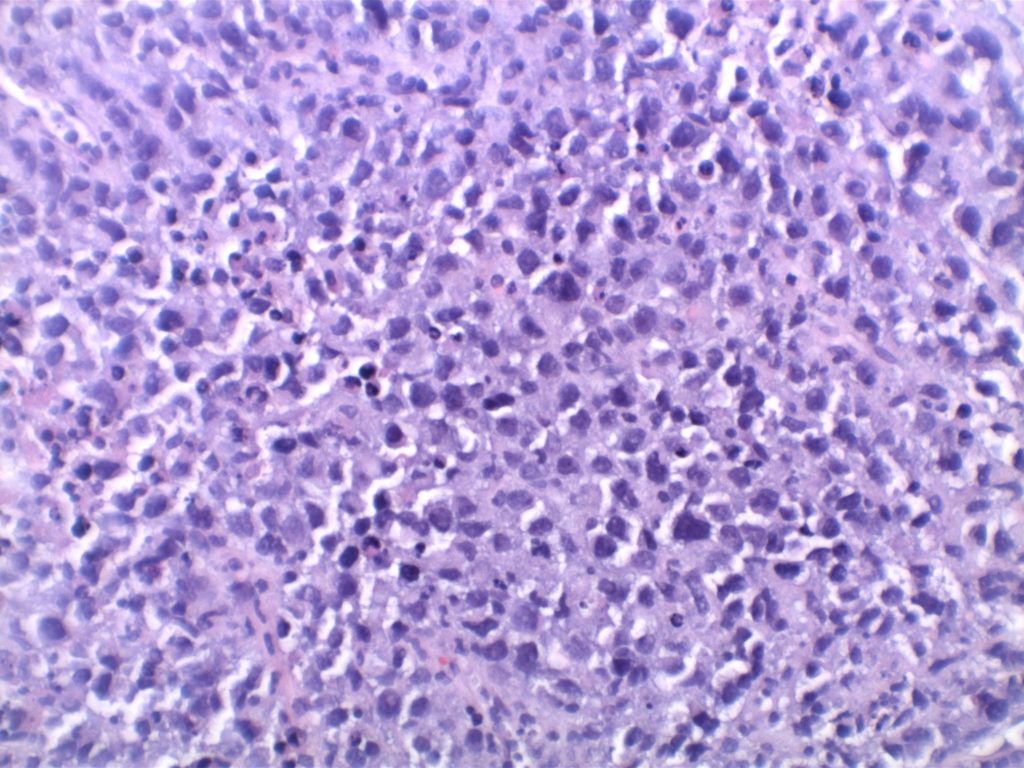
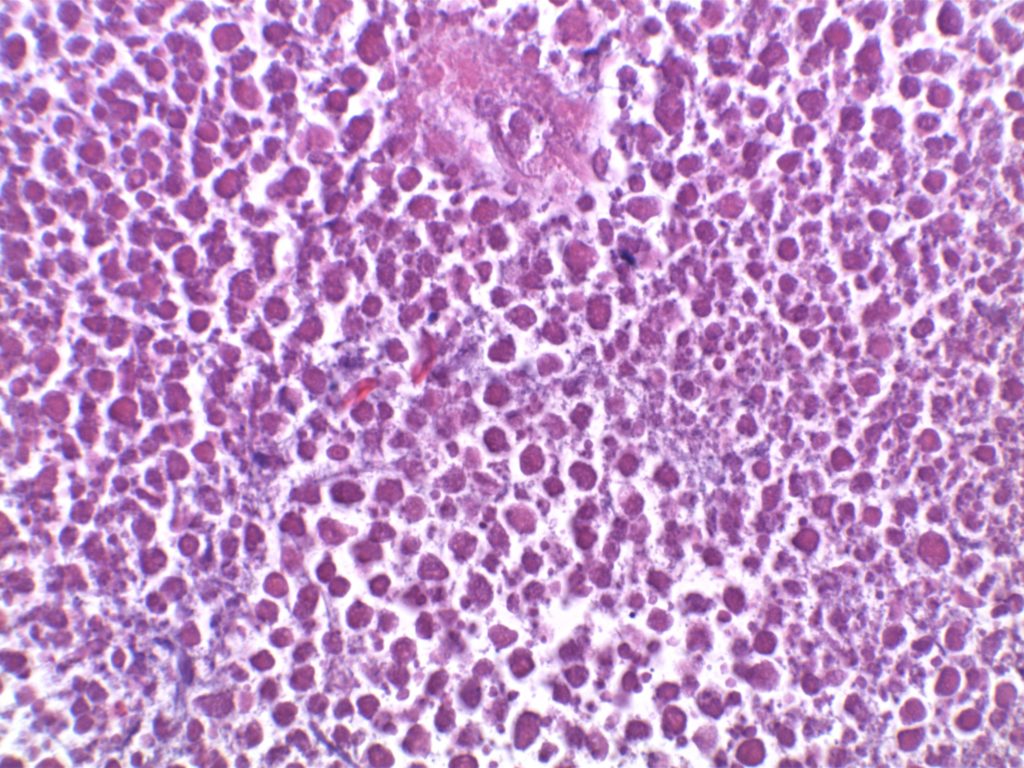
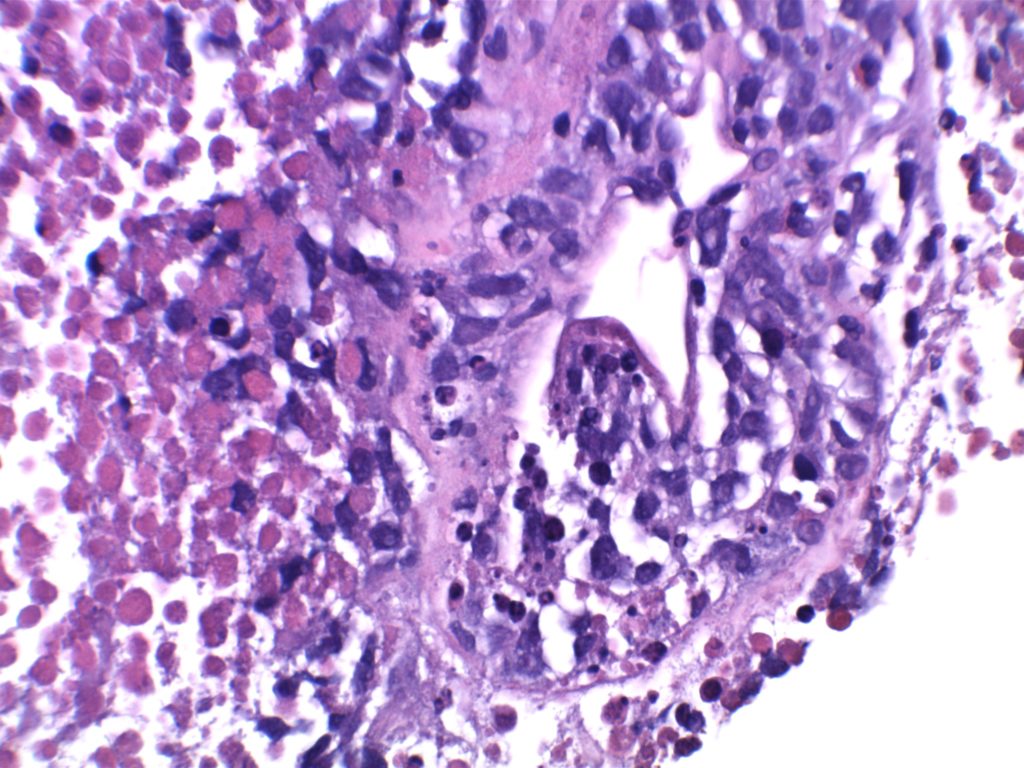
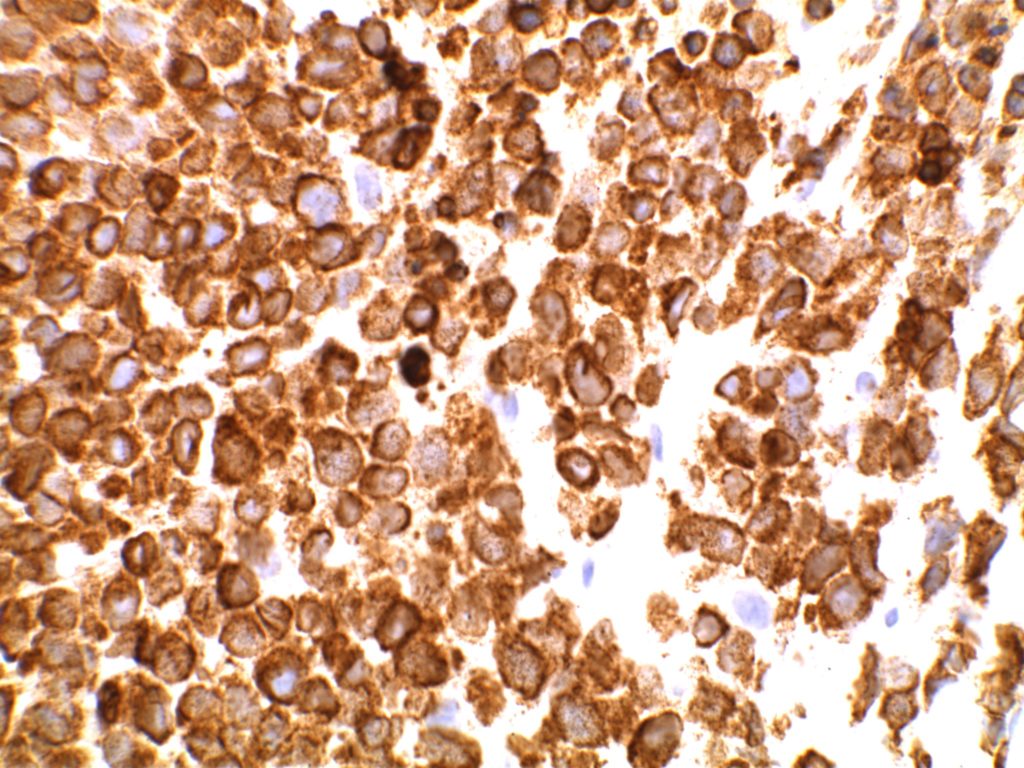
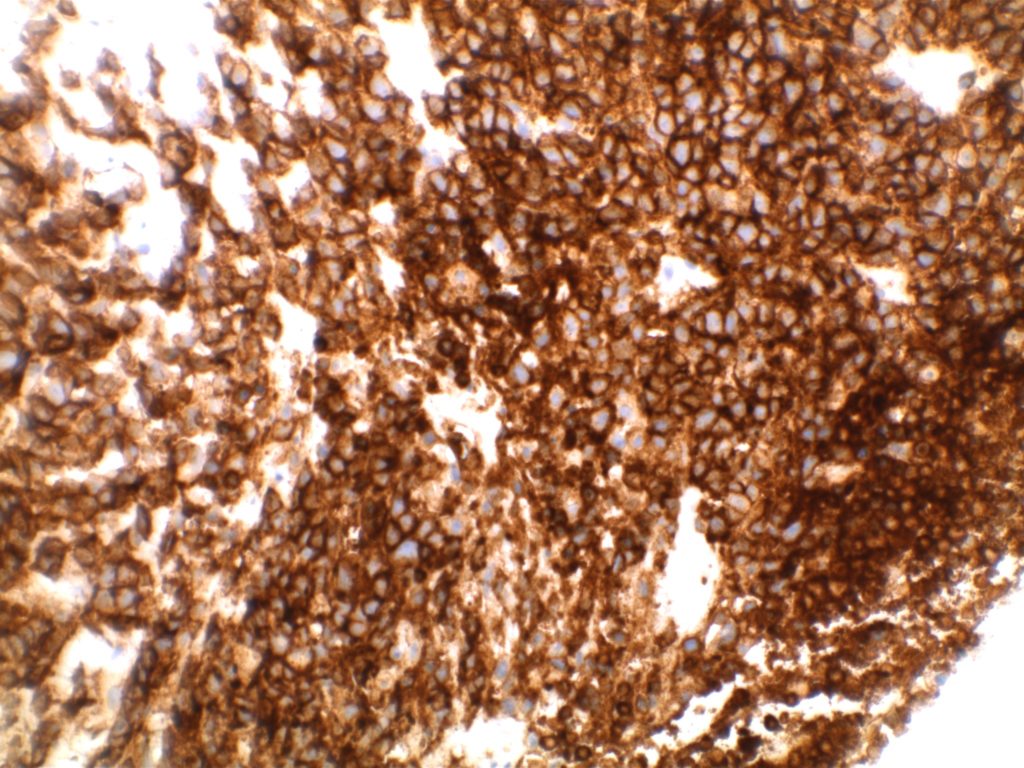
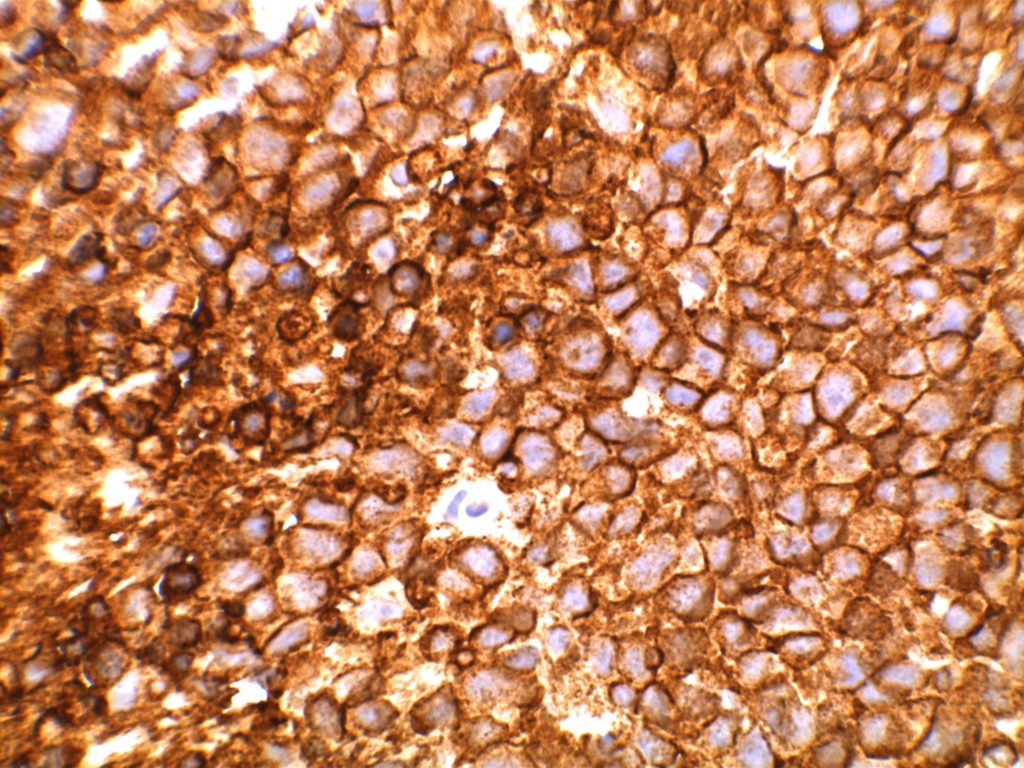
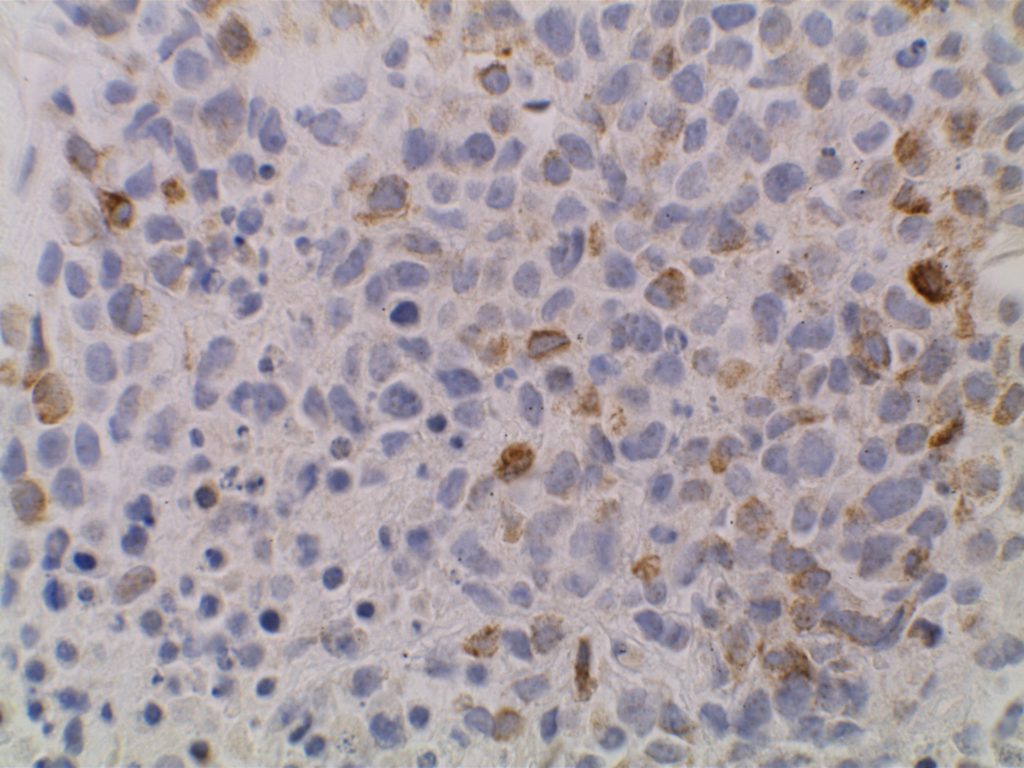
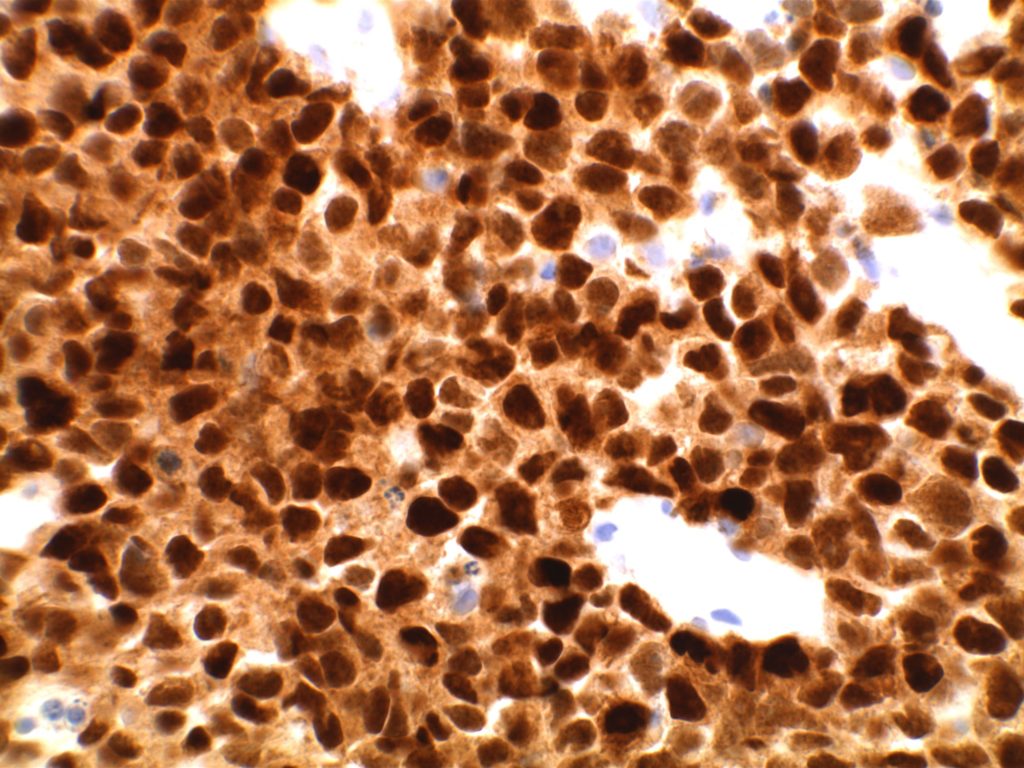
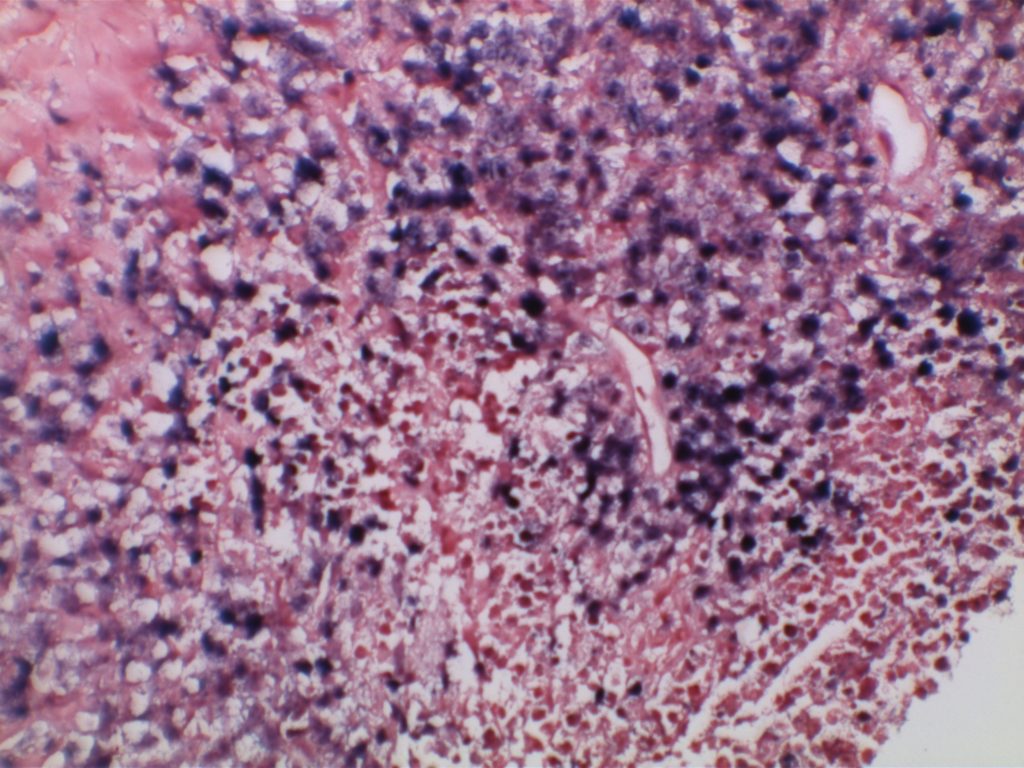
References
Loong F, Chan ACL, Ho BCS, Chau Y-P, Lee H-Y, Cheuk W, et al. Diffuse large B-cell lymphoma associated with chronic inflammation as an incidental finding and new clinical scenarios. Mod Pathol. 2010;23: 493–501. doi:10.1038/modpathol.2009.168
Swerdlow SH, Campo E, Harris, NL, Jaffe ES, Pileri SA, Stein H, Thiele J (Eds): WHO Classification of Tumours of Haematopoietic and Lymphoid Tissues (Revised 4th edition). IARC: Lyon 2017
